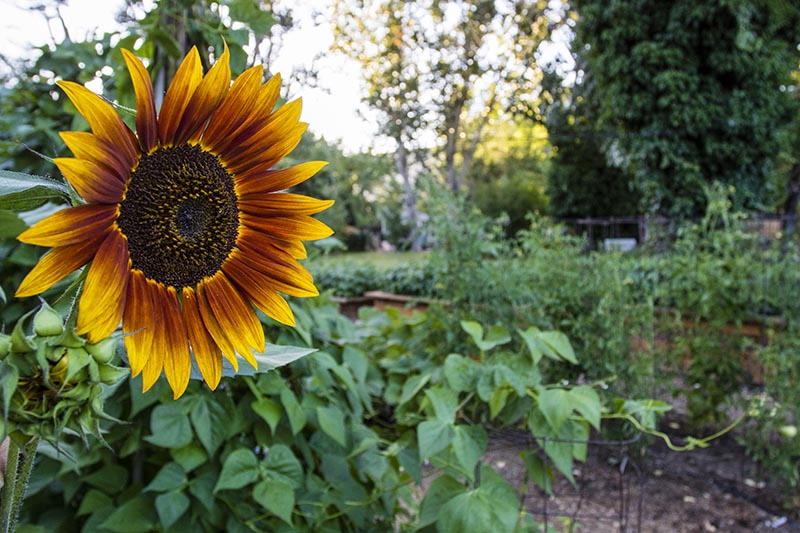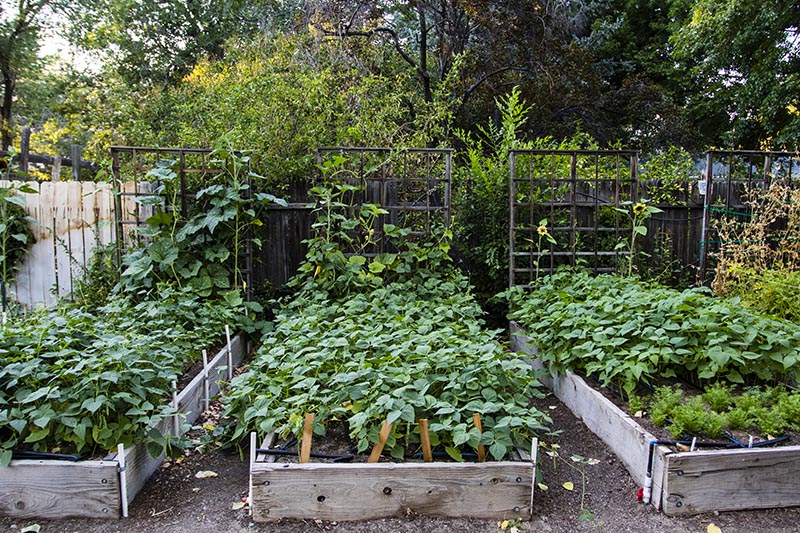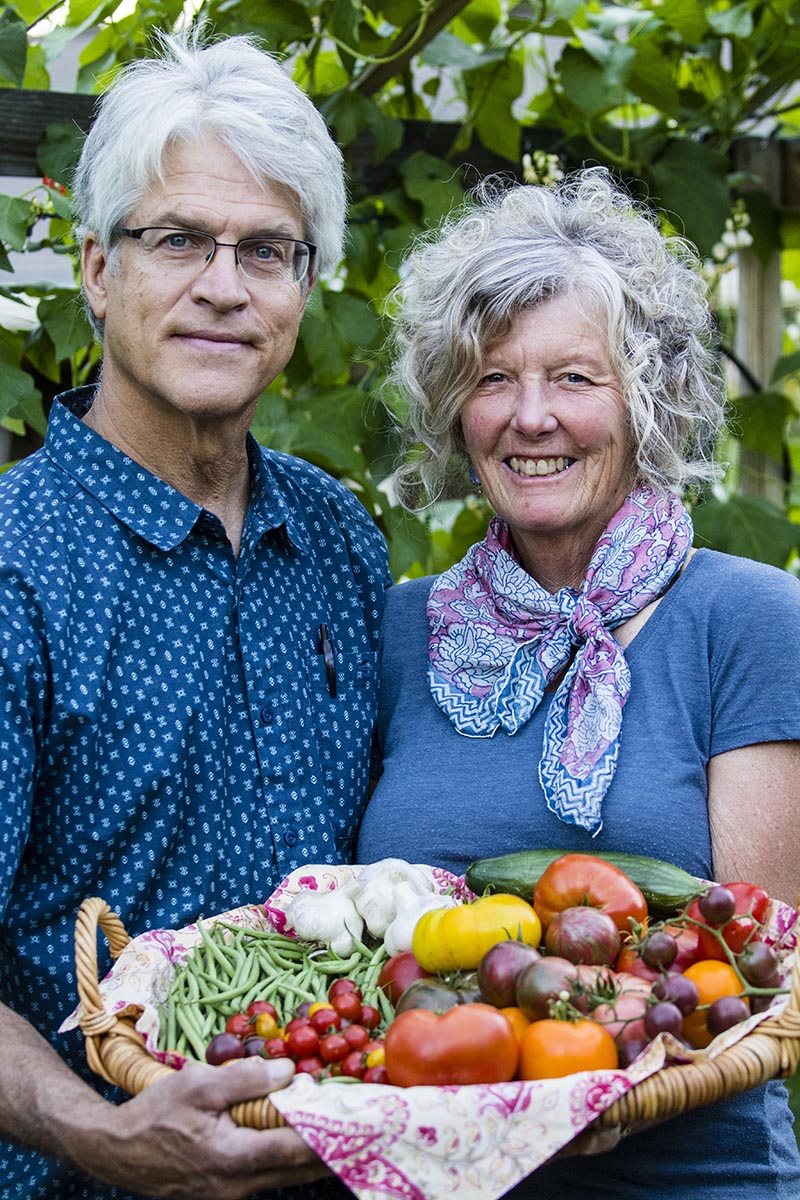Backyard Farms’ pandemic-fueled growth proves the power of locally grown food.
There’s nothing like a global pandemic to test the human spirit and remind us what really matters. Like knowing how to bake a good sourdough bread and maintain its starter or how to perfect a TikTok dance. You know, the essentials.
Also illuminated during the pandemic was the fact that if you were a person with at least one hand, some growing space, a minimum of $30 to spare, and a pulse, you could try growing your own food at home — and many of us did.
Whereas many businesses shrank or folded in 2020, nurseries boomed. And within that sector, vegetable starts flew off shelves. At the nursery where I volunteered last year, I faced a continuous line of people awkwardly holding flats of kale and tomato starts, seed packets, bags of soil and fertilizers, gardening gloves, how-to books, and tools, asking questions such as, “What does cold hardy mean, and does that really matter?”
It matters. Ask Mike Johnson of Backyard Farms. He and his wife, Sandi Beckett, have been growing produce, with a special focus on tomatoes, at their two-thirds-acre property in Southwest Reno for more than 10 years, and they know that in order to grow in our often-extreme, high-desert conditions, you have to pay attention to the weather. Details matter. Frosts can come as late as June, and your precious tomato plants can’t hack that. Brown and black thumbs, take note.
Drawing a Crowd
Situated between the Truckee River and the bend at Fenno Way, their little organic homestead looks like an agricultural oasis in a swath of ranch and mid-mod homes. No brown thumbs here; the front yard is teeming with crops, an arbor with vines growing on it, and fences lined with espaliered fruit trees. Birds chirp all around, and you can hear the faint din of wind chimes wafting over the roof from their backyard. A chimenea and Adirondack chairs hint at evenings well spent with friends over food and drink before a toasty fire.

“The concept has always been, ‘we live here … so we want it to look good,’ but that it could also be productive,” Johnson says. “Everything is flexible, so I can change the crops and their locations. Each year we keep upping our game.”

“What has been really fun,” Beckett adds, “because I like to talk to people, was that people stop here all the time, on their bikes, they walk through — especially during COVID. The river became a corridor for rafters this past year. Uber would come here looking to pick people up to take them back to their cars … I kid you not, hundreds of people. We’ve had children come on their bikes and say, ‘Oh, this is so cool.’ So to me it’s been this evolution of people seeing this yard and stopping and telling their stories, and Mike giving them ideas and tips.”
Popular Produce
In addition to supplying their produce to five Reno restaurants (Beaujolais Bistro, Johnny’s Ristorante, La Cucina, Sup, and Whispering Vine Wine Co.), Mike and Sandi also run a small farm stand in their front yard. They donate all of the proceeds — last year, they donated more than $1,000 to Community Health Alliance, Johnson’s former employer. But the real payoff has been in generating community interest and connection around agriculture.
“Last year, for the farm stand, we just put stuff out,” Beckett says. “Then a neighbor started putting flowers out. Another neighbor asked to add their organic peaches and plums to the farm stand. Then the neighbor right around the corner started a farm stand that offers fresh eggs, and she is working on having an aviary out front. The kids brought stuff; they even had a pumpkin-throwing contest.”
Johnson says the Bellagio resort in Las Vegas even approached them for their produce, but they politely refused, flattering though it must have been.
Last year, Backyard Farms grew 32 different vegetable crops, including 26 different varieties of tomatoes (averaging 100 to 130 pounds per week!), seven different types of beans, and four different types of cucumbers.
“We make more habitat for a wide range of everything, so not having just a monoculture, to create a healthy balance,” Johnson explains.
The same can be noted in the wildlife. The couple’s wren houses attract wrens that eat bugs, along with goldfinches that nest in their fruit trees. Cooper’s hawks have moved in and eat their ground critters, which make their habitat in the earth and ground covers. It’s a whole system — a whole beautiful, delicious system. Stop by, they insist, and see for yourself.
Cameron Cox is an ecological landscape designer and general plant, food, and farming enthusiast. She divides her time between pretending cheese is kale, and exploring with her dogs, Dutch and Bandit.
Wanting to turn that brownish/blackish thumb a little greener? Here are some pro tips from Mike Johnson for growing your own produce:
- Start small and use starts, not seeds, for greater success.
- Improve soil: Use pelletized alfalfa (pure) from feed stores and Dr. Earth’s blend from nurseries.
- Water consistently. Install an automated drip system if you can.
- Pay attention to weather! Cover crops with a frost cloth, such as Agribon, when frosts are predicted.
- Choose herbs, brassica plants such as kale, and lettuces for shoulder seasons and winter.
- Grow vertically. Use trellises to maximize space and ease your back.
- Grow what you like to eat.
- Be patient, and be willing to observe your plants.


